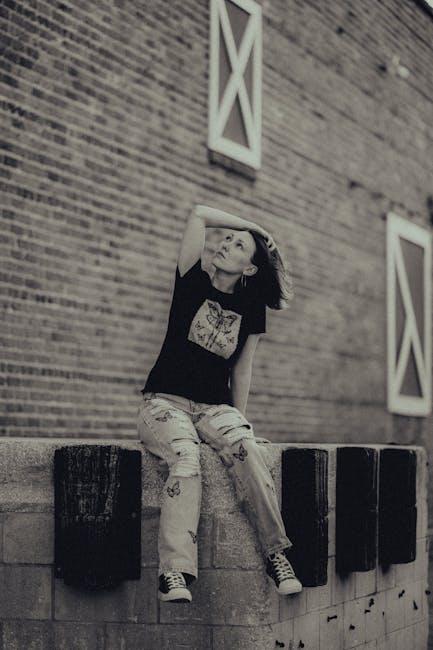Editing for Emotion: Subtle Techniques That Shape Audience Perception
In the world of film, video, and multimedia storytelling, editing isn’t just about putting clips together in a coherent order; it’s a powerful tool to invoke emotion and shape how audiences perceive a narrative. Editing for emotion involves subtle decisions that influence mood, tension, and connection without overwhelming the viewer. This article unpacks the nuanced editing techniques that editors and filmmakers use to evoke feelings and deepen audience engagement. Whether you’re a budding video editor or a seasoned filmmaker, understanding these subtle techniques can transform your storytelling and captivate your audience on a whole new level.
Why Editing for Emotion Matters
Emotion is the heartbeat of storytelling. While scripts and performances lay the foundation, editing guides viewers through the emotional landscape. Effective emotional editing can:
- Enhance narrative impact: Ensure emotional peaks and valleys land with maximum effect.
- Control pacing: Adjust the rhythm to build tension, relief, or intimacy.
- Establish mood: Use color grading, shot length, and transitions to subtly influence feeling.
- Create empathy: Foster deeper connection with characters through timing and perspective choices.
Subtle Editing Techniques That Shape Audience Perception
Here are some key editing techniques that influence emotional response, often working beneath the surface to affect perception:
1. Shot Duration and Rhythm
The length of a shot dramatically affects audience emotion:
- Longer shots: Often create a contemplative or tense atmosphere, allowing the viewer to soak in emotion.
- Rapid cuts: Generate excitement, anxiety, or chaos.
- Pause and silence: Letting a scene breathe can amplify emotional weight.
2. Shot Order and Juxtaposition (The Kuleshov Effect)
The meaning a viewer derives can change drastically based on what shots are paired together. This subtle manipulation guides emotional interpretation:
- Showing a character’s neutral face followed by an image of a funeral suggests sadness.
- Changing shot order can alter the perceived motivation or feelings of characters.
3. Cut on Action
Editing while a subject is moving helps sustain emotional energy and immersion. This technique encourages seamless, organic transitions that keep viewers emotionally connected to the flow without distraction.
4. Reaction Shots
Intercutting moments that show a character’s emotional response reinforces empathy. Even a brief glance or subtle facial expression can heighten emotional impact significantly.
5. Use of Music and Sound Editing
Sound acts as an emotional catalyst. Editors carefully choose how and when to integrate background scores, sound effects, or silence. The interplay between visuals and audio subtly guides emotional cues.
6. Color Grading and Mood
Though technically part of post-production grading, color choices in editing support emotional tone:
- Warm tones evoke comfort or nostalgia.
- Cool tones generate detachment or sadness.
- High contrast can heighten drama.
Practical Tips for Editing Emotionally Engaging Videos
To implement these techniques effectively, consider these actionable tips:
- Watch your cut with fresh eyes: Take breaks and revisit sequences to ensure emotions resonate naturally.
- Focus on subtlety: Less is often more – avoid overusing effects or rapid cuts that might distract.
- Collaborate with sound designers: Strong audio complements editing and reinforces emotion.
- Test audience reactions: Preview edits with varied viewers to gauge emotional impact.
- Use reaction shots sparingly: Too many can dilute emotional focus.
Case Study: Emotional Editing in “La La Land”
Damien Chazelle’s La La Land serves as a prime example of editing for emotion. The film uses:
- Deliberate pacing: Long lingering shots during romantic scenes, contrasted with quicker cuts in moments of conflict.
- Music synchronization: Editing tightly matches musical rhythm to emotional beats.
- Juxtaposition: Scenes of joy cut with reminders of personal sacrifice, deepening emotional complexity.
The subtle interplay between editing decisions and narrative results in a deeply affecting viewing experience.
Comparing Editing Techniques and Emotional Outcomes
| Technique | Emotional Outcome | Example Application |
|---|---|---|
| Long Take | Heightened tension or intimacy | Dramatic conversation scenes |
| Quick Cuts | Excitement or urgency | Action sequences, chase scenes |
| Reaction Shot | Empathy, character insight | Close-ups on subtle facial expressions |
| Color Grading (Warm) | Comfort, warmth | Flashback or nostalgic scenes |
| Silence/Pause | Emotional weight, reflection | Dramatic revelations |
First-Hand Insights: An Editor’s Perspective
“Sometimes the smallest cut makes the biggest difference – a split second deciding whether the audience feels anxiety or calm. Emotion in editing is often about restraint, allowing the story and performances to breathe.” – Alex M., Film Editor
Benefits of Mastering Emotional Editing
Harnessing these subtle editing techniques can deliver several key advantages:
- Stronger audience engagement: Viewers stay emotionally invested and recall your story longer.
- Enhanced storytelling clarity: Emotional cues complement narrative arcs organically.
- Greater creative control: Editing becomes an active storytelling tool rather than just technical assembly.
- Increased marketability: Emotionally resonant content thrives on social media and attracts wider audiences.
Conclusion: The Power of Subtlety in Editing for Emotion
Editing for emotion is a delicate art that transcends basic cuts and transitions. It requires an intuitive understanding of human psychology, narrative rhythm, and technical precision. By applying the subtle techniques described in this article – from shot duration and reaction cuts to color grading and sound integration – editors can shape audience perception and emotionally elevate their stories. Remember, the most powerful emotional moments often emerge from the smallest, subtlest decisions in the edit suite.
Whether you’re editing a short film, documentary, or commercial, infusing your cuts with emotional intent can transform your work and create memorable viewing experiences. Start practicing these methods today and witness the compelling impact of editing for emotion.











